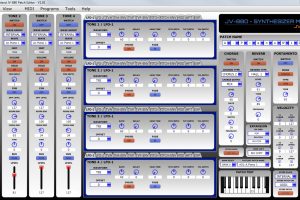

As a result, some of the patches have less dynamics going on in them. For some reason it seems that 5050 has some sort of compressor at its output. One thing that is very different on 5050 vs 1080 is the dynamics. This is what i always suspected, however since 5080 can set its clock to 48 kHz when loading S series samples we can’t say they sound 100% identical, simply because 5080 can produce more high freq content in ‘S-760 mode’. FAQ UPDATE according to Joe (from comments below) the 5080 seems to have the same low shelf filter going on like 5050 and they seem to sound identical. Especially when you start using the digital output and route it directly into DAW, it’s a no match in crystal clear sound. But the high freq response is just spectacular if compared to something like a JV-1080. It should be worth mentioning that 5050 has some sort of permanent low shelf filter at about 30 Hz, so you’ll definitely get a less bass energy.

You will find some waveforms more hi fi sounding in XV when compared to Super JV series. 5050 is more hi-fi and has that extra sheen while 1080 is more darker and is a bit more mix friendly when it comes to frequency and EQ. This is a fact that i’ve verified myself. Patches played on 10 side by side will sound different. Because of 44.1k sample content, some energy has been “lost” due to wider frequency coverage. There is some truth in that but what i can tell in reply is that 5050 sounds more hi-fi. Some users started complaining about the XV-5050 sounding a bit “thin”. I will focus now on XV-5050 and compare it with JV-1080. (though some web pages list it as 32kHz ROM only, but this is not true). XV-5080 is mixed content 32kHz and 44.1 kHz. Following the JV/XP series were Roland’s XV series: 5080, 50.


 0 kommentar(er)
0 kommentar(er)
